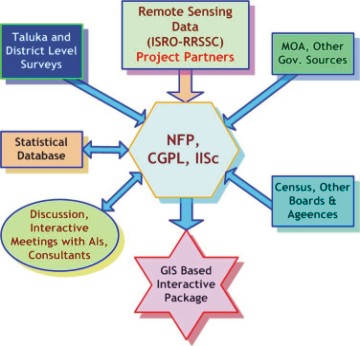Background
Click here to visit National Biomass Atlas of India
Energy in useful form is welcomed by the society if the generation process is eco-friendly, renewable and economical. It is well known that Biomass has been used in all the countries in general and tropical countries in particular mainly to generate thermal power either for home use or to run industrial boilers. Biomass is the residues generated out of plants, agricultural crops and trees and hence they are renewable. The recent advancement in science achieved especially at CGPL, IISc has shown that by adopting principles of Combustion, Gasification and Pollution control it is possible to generate ‘Clean’ power which is either in electrical or thermal form. With this technical strength it is found relevant that CGPL produce a country wide Biomass Atlas to enable assessment of biomass availability to forecast the power generation potential. Under this context, MNRE [Ministry of New and Renewable Energy] decided to bring out a Nation wide Biomass Atlas based on the guidelines given by CGPL.

Biomass Data Collection and Methodology
The Diagram shows the methodology used to integrate the data into Atlas. This software package is developed at CGPL, IISc, as the National Focal Point (NFP) that provides information on Biomass Residues form Agro-Crops, as related to Energy generation both in Spatial and Statistical form. The residue generation based on agricultural output is used to compute the surplus Biomass available for Energy production after accounting for the societal uses such as Fodder, Domestic Fuel, and Thatching. While all the use for fodder and thatching is considered unavailable for energy generation, use for domestic fuel is decided based on the district level surveys conducted with MNRE support. The data on agricultural outputs are obtained from the published data by Ministry of Agriculture where as the data on residues are obtained from Taluk and District surveys. The Taluk Study was initiated by MNREand conducted during 1999-2001 for strategically selected taluks (of about 500) across the country. Later, the District Survey instituted by MNRE was done during 2002-04 for 15 districts country wide.
Next Page